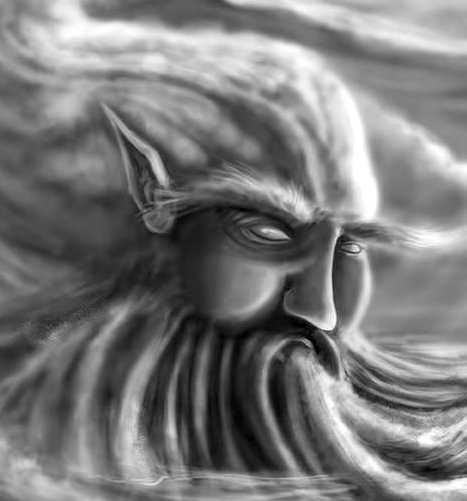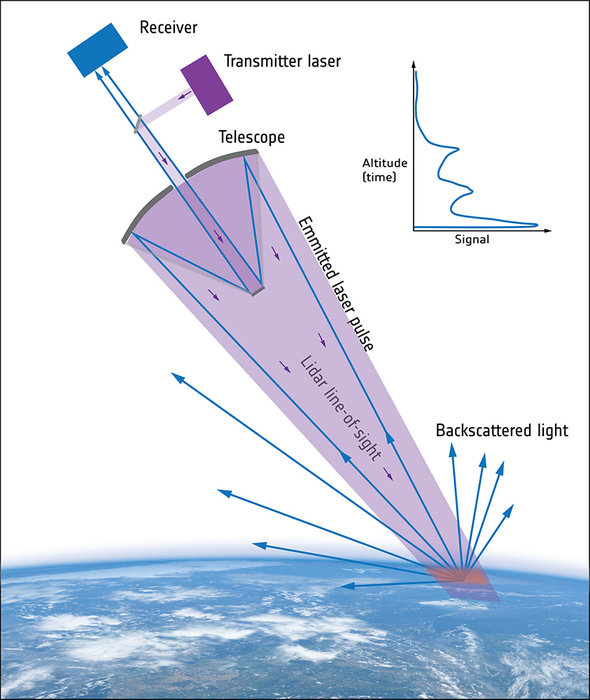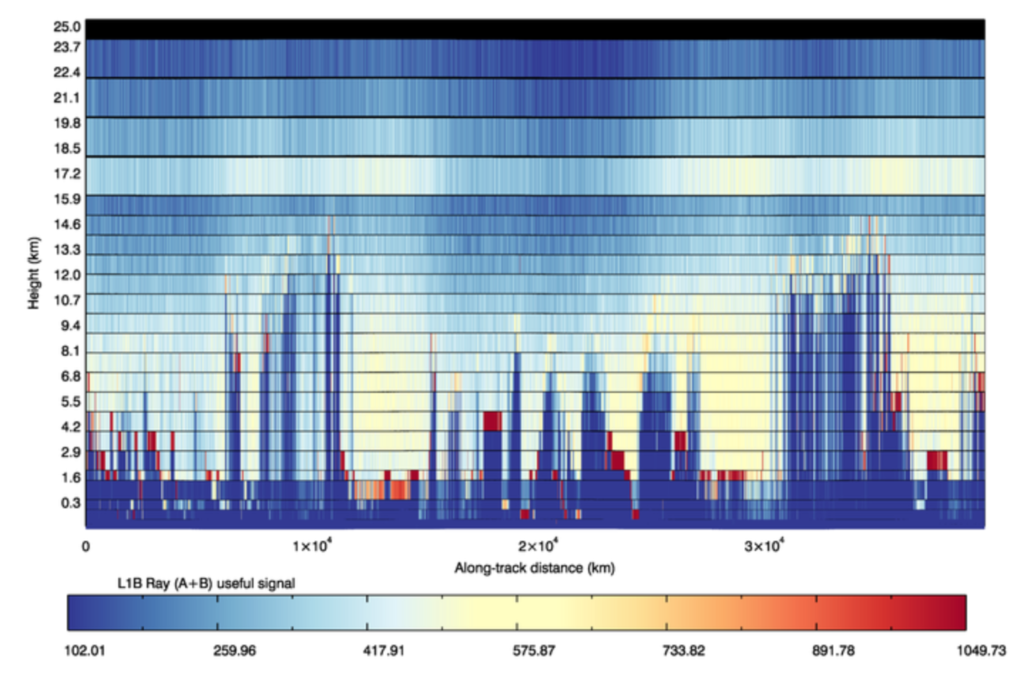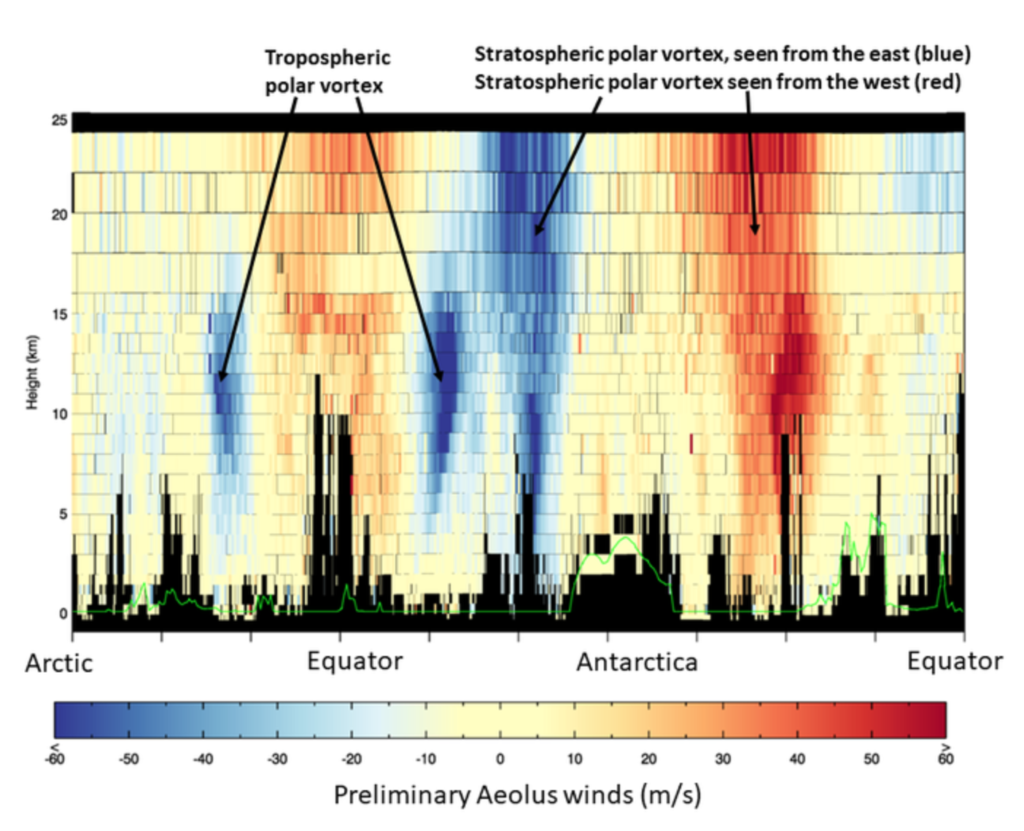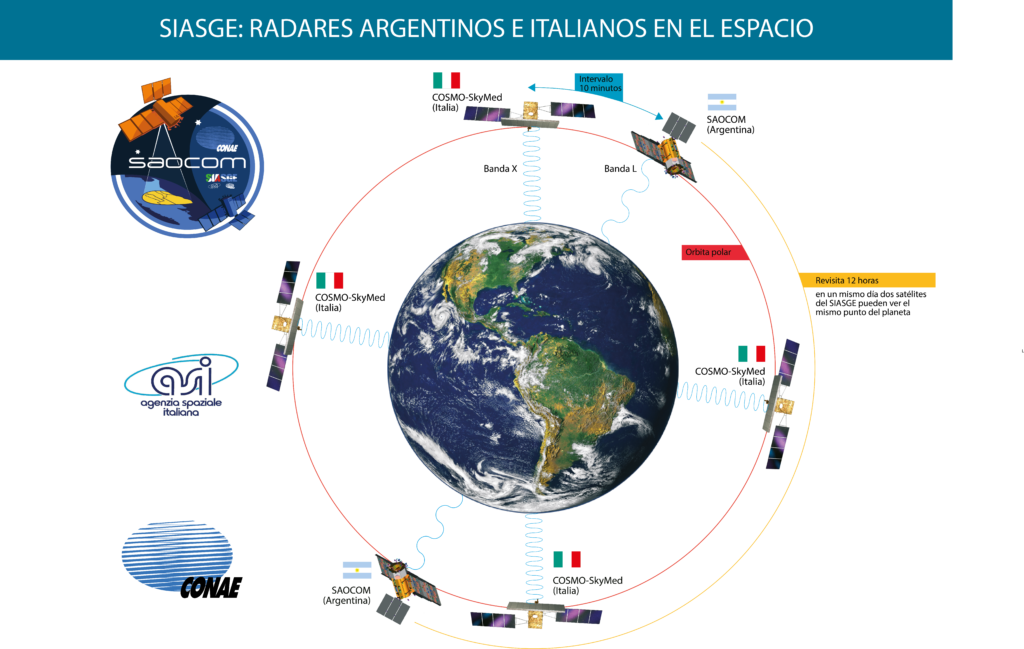
SIASGE – another Latin story
SIASGE (Sistema Italo Argentino de Satélites para la Gestión de Emergencias) stands for Italian-Argentine Satellite System for Emergency Management. It represents a joint programme of the Italian Space Agency (Agenzia Spaziale Italiana – ASI) and the Argentine Space Agency (Comision Nacional de Actividades Espaciales – CONAE) with the scope to integrate the national radar missions of both countries and to cooperatively exploit the data. The mentioned national missions are the Italian COSMO-SkyMed and the Argentine SAOCOM missions. Both missions constitute SAR constellations with COSMO-SkyMed operating 4 satellites in X-band and SAOCOM with two satellites in L-band. The visionary idea of a joint mission already dates back to 20 years ago and was initiated by the former ASI President Sergio De Julio and the Director of CONAE Conrado Varotto. The synergy between the two constellations will create new applications based on the joint employment of the two radar technologies.
The satellites
COSMO-SkyMed constitutes an already established radar satellite constellation with four satellites orbiting in space since 2010. A second generation of satellites is planned to be launched in 2019/2020. The Argentine SAOCOM mission is a new constellation consisting of two satellites. SAOCOM-1A, the first of two identical satellites of the constellation, was launched on 8 October 2018 and finally reached its sun-synchroneous orbit at around 620km altitude. SAOCOM-1B, its twin satellite, is planned to join the same orbit in 2019. The Argentine company INVAP is the prime contractor for the design and construction of the SAOCOM-1 spacecrafts and their SAR payload. However, the satellites are developed in partnership with Belgium and Italy.
Apart from a thermal infrared camera, the SAOCOM-1A satellite carries an L-band polarimetric SAR instrument (~23cm wave length) with the objectives to:
- provide all weather, day/night polarimetric L-band SAR observations
- generate soil moisture maps particularly for the Argentine Pampas and lowland regions every 6 days covering an area of around 83 Mio hectars for giving support to agricultural and hydrological applications
- provide support to agricultural producers in the decision-making process related to planting, fertilization and irrigation, in crops such as soybean, corn, wheat and sunflower, for example, to optimize the use of fertilizers
- provide support to agricultural producers in relation to the use of agrochemicals (fumigation) for the control of diseases in crops, in particular for the fusariosis of the ear of wheat
- develop SAR interferometric techniques for collaborating with the development of different applications.
- collect data that is useful in emergencies, such as floods, droughts, desertification, landslides, oil slicks in land and ocean, fires, seismology, earthquake activity and volcanism
Depending on the swath and polarization mode the SAOCOM-1A satellite records with a horizontal resolution of 10 – 100m covering a swath width of 30km – 350km at an incident angle from 20 – 50° (for technical details consult https://directory.eoportal.org/web/eoportal/satellite-missions/s/saocom, ). Once the constellation is complete, SAOCOM will deliver 500 images daily orbiting the Earth 15 times a day.
The spacecraft operation is accomplished by the CONAE Control Center at Cordoba, Argentina with the support of ESA’s expert teams at ESOC in Darmstadt. All data processing, archiving and distribution is being provided by the MOC (Mission Operations Center) facility at Cordoba. The Cordoba (Argentina) and Matera ground station of ASI, Italy will be available for L-band SAR imagery downlinks.
Whats the advantage of SIASGE
The main difference between the SAECOM and COSMO-SkyMed missions is the wavelength of their sensors: The X-band of COSMO-SkyMed satellites has a wave length of around 3cm, while the L-band sensor of SAECOM satellites records at a wavelength of approximately 23cm. The different backscattering properties of the X-band and L-band translate into different kinds of information registered by the sensors. As a very general statement radar waves are backscattered by objects that have at least the size of their wavelength (and dielectric properties). – This can be explained by the wave and particle shape theory of electromagnetic waves. Hence, an X-band radar wave requires an object of around 3cm to be reflected, while an L-band wave is only reflected by objects larger than 23cm. As a consequence the X-band is useful to detect small objects, whereas the L-band is beneficial to observe larger objects that would result unclear at a smaller wave length. Combining the two facilitates to monitor geometric large objects at a great detail. The exploitation of both band characteristics is one of the striking advantages of the mission. A second benefit is the very good temporal resolution with two coverages per day.

SIASGE consists of six satellite, four of them from the Italian COSMO-SkyMed constellation and two of them from the Argentinian SAOCOM constellation. The image shows the satellites belonging to the joint mission. Source: CONAE
EXAMPLES
Following examples should highlight the different backscattering properties of the X-band and L-band and its impact on the various applications:
Trees: The X-band is reflected by leaves of ~3cm size while the L-band is reflected by the great structures of the tree such as branches or the trunk. Both bands can be exploited together to give a full representation of a forested area.
Agriculture: Consider rice plants growing in a paddy. The young plants emerging from the water will give a backscatter in X-band, while the L-band will not detect any signal and is much less effective at this stage of growth. If the plant reaches a major growing stage, the X-band will not alter considerably as it is saturated. In contrast the L-band changes during the vegetation period and gives useful information about the growing stage and the health condition of a plant.
Surface backscattering: Due to its small wavelength, the X-band is sensitive to small surface roughness. Hence, the x-band signal reflected at a rough surface comes from the surface itself. The same surface is seen much flatter by the L-band, because of the larger wavelength. L-band shows objects very clearly due to the double bouncing of the signal over smooth surfaces.
Penetration characteristics: The penetration of microwaves in terrain is directly dependent on wavelength. X-band is backscattered at the soil surface (if it is not very dry sand), while the L-band has more signal/sensitivity to the volume content of terrain as for instance soil moisture. Also dry sand and snow are penetrated to a greater extent by L-band than by X-band.
Interferometry: Phase measurements in X-band provide a much higher accuracy than in L-band due to the shorter phase cycle corresponding to half the wavelength. The comparison of phase measurements between two satellite passes is possible only if the two phase signals considered are correlated (coherent). Time decorrelation of phase signal is a strong limit to interferometric analysis and is much stronger in X-band than in L-Band. Hence, X- and L-band interferometric applications are complementary in terms of the area of application: L-band interferometry is more robust and of wider application while X-Band provides more accurate results over selected areas.

Backscattering properties of X-band and L-band on a surface covered by grass. Source: e-geos
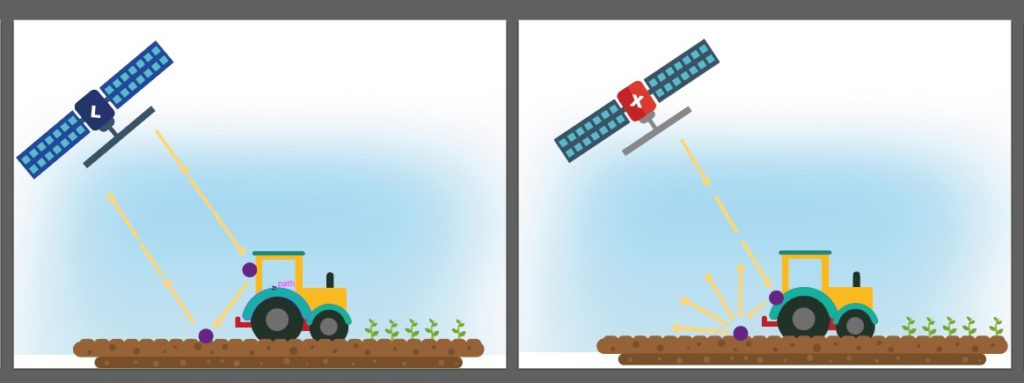
Backscattering properties of X-band and L-band on a farming machine showing double-bounce effects for both bands. Source: e-geos

Backscattering properties of X-band and L-band at tree object. The double-bounce effect of L-band is shown in the right panel. Source: e-geos

Penetration characteristics of X-band and L-band into soil. Source: e-geos





